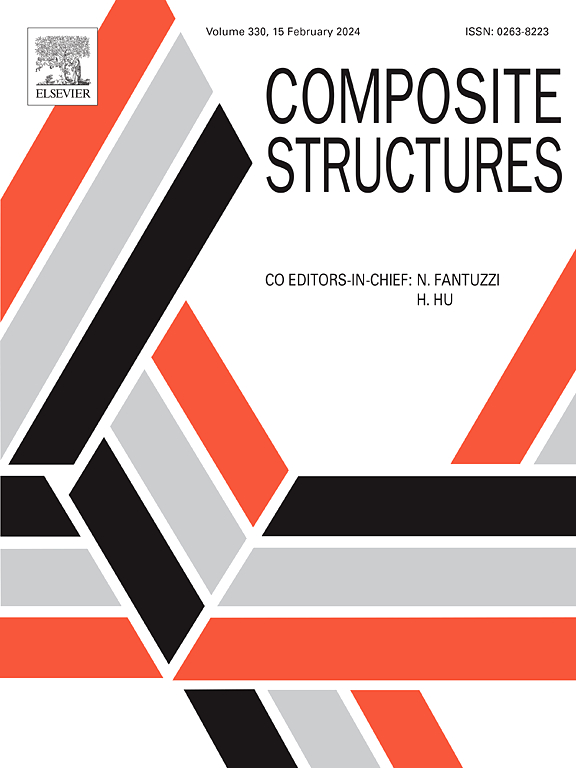Resistance to crack propagation of a composite with recycled jute fabric – Polypropylene
IF 6.3
2区 材料科学
Q1 MATERIALS SCIENCE, COMPOSITES
引用次数: 0
Abstract
This study investigates the mechanical properties of PP/jute fabric laminates in different weave configurations (Satin, Serge 2x2, and Taffetas), focusing on toughness, stress intensity, energy restitution rate, and fracture energies. The results show a narrow toughness range (2.9 to 3.7 MPa.m1/2) across configurations. Stress intensity factor peaks at 6 MPa.m1/2 for three composites, with one (Bio-Com B) reaching 8.5 MPa.m1/2. Energy restitution rate increases with crack growth, with Bio-Com B exceeding others at 24 kJ/m2. Fracture energy trends are consistent across materials, with weave having a notable influence on properties beyond a specific crack growth value. The study highlights the significant effect of reinforcement architecture on laminate mechanical properties, especially in fracture energy and crack growth resistance. It concludes that recycled jute/PP composites offer promising, sustainable alternatives for furniture and construction due to their superior cracking resistance and environmental benefits.
求助全文
约1分钟内获得全文
求助全文
来源期刊

Composite Structures
工程技术-材料科学:复合
CiteScore
12.00
自引率
12.70%
发文量
1246
审稿时长
78 days
期刊介绍:
The past few decades have seen outstanding advances in the use of composite materials in structural applications. There can be little doubt that, within engineering circles, composites have revolutionised traditional design concepts and made possible an unparalleled range of new and exciting possibilities as viable materials for construction. Composite Structures, an International Journal, disseminates knowledge between users, manufacturers, designers and researchers involved in structures or structural components manufactured using composite materials.
The journal publishes papers which contribute to knowledge in the use of composite materials in engineering structures. Papers deal with design, research and development studies, experimental investigations, theoretical analysis and fabrication techniques relevant to the application of composites in load-bearing components for assemblies, ranging from individual components such as plates and shells to complete composite structures.
 求助内容:
求助内容: 应助结果提醒方式:
应助结果提醒方式:


